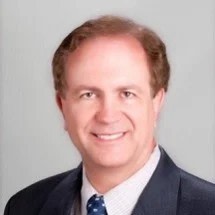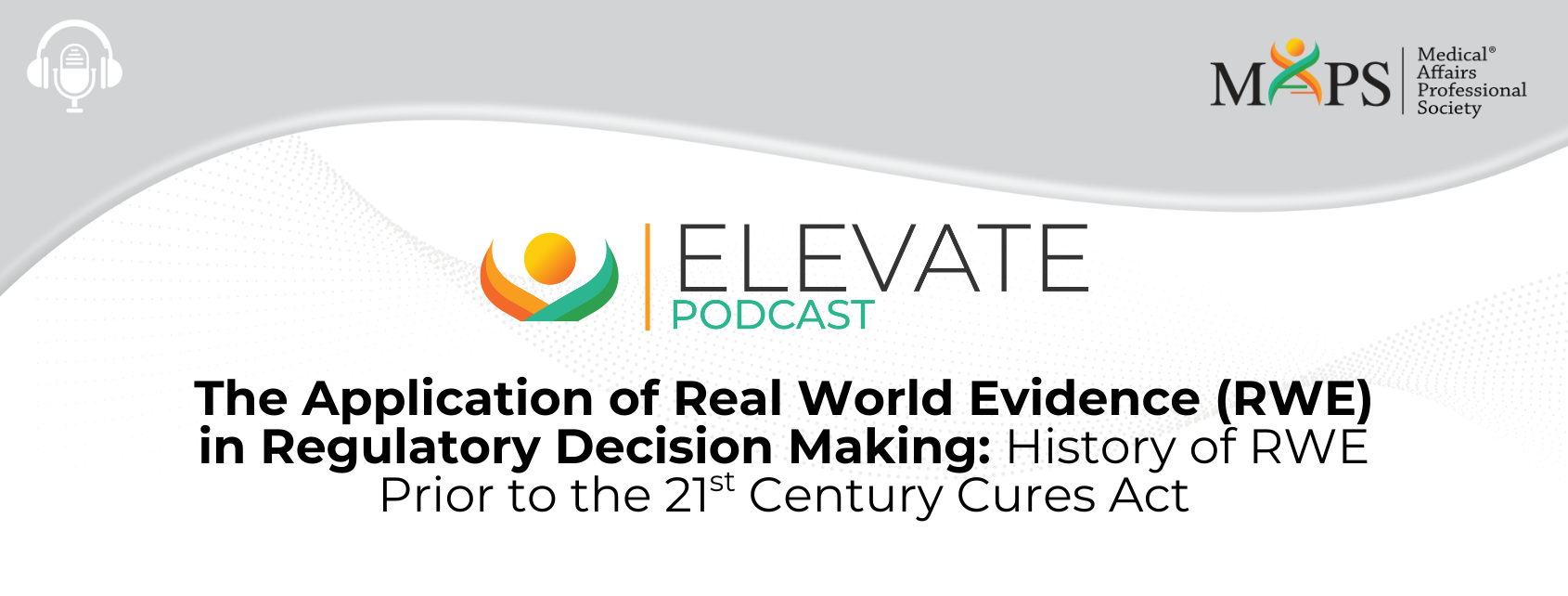In this second podcast episode focusing on the evolving uses of Real World Evidence (RWE) in regulatory decision-making, Medical Affairs thought leaders discuss the Pre-21st Century Cures Act uses of RWE with Post-Marketing Surveillance to understand the impact of the 21st Century Cures Act on RWE and Natural History Studies. To read more about the evolving use of RWE including case studies, please see the Elevate article that accompanies this podcast, Contemporary Applications of Real-World Evidence in Regulatory Decision Making.

MODERATOR: Cerise James, MD
Cerise James, MD, MPH is an expert in Medical Affairs, currently works for mid-size pharma as a Manager, Medical Value Liaison. Dr. James holds several board appointments within pharma and academia.

SPEAKER: Neil Belson, JD
Neil Belson has own law practice in Maryland which focuses on the Pharmaceutical and Biotechnology industry. He assists biopharma companies with legal issues associated with drug development, clinical trials, gene therapy, precision medicine and real world evidence. Prior to attending law school, Mr. Belson served as a Peace Corps Volunteer in the Dominican Republic. He is a named co-inventor on six issued patents in the U.S. and Canada.
Following is an automated transcription provided by otter.ai. Please excuse inaccuracies.
Cerise James
Welcome to the Medical Affairs Professional Society’s Evidence Generation Focus Area Working Group. This is the second podcast in a series exploring the application of Real World Evidence in regulatory decision making. As members of the MAPS community, we encourage you to engage in conversations about evidence generation with other MAPS members via the community portal on the MAPS site. Simply login with the email address and password associated with your MAPS account and click on the discussion tab. Then scroll down to Evidence Generation to post a question or review previous postings. The views expressed in this recording are those of the individuals and do not necessarily reflect on the opinions of MAPS, or the companies with which they are affiliated. This presentation is for informational purposes only, and is not intended as a legal or regulatory advice. On today’s podcast, we will discuss Real World Evidence. How did we get here, other podcasts will be added on the topic and hopefully stimulate discussions within your own company on the value of evidence generation. I am Dr. Cerise James, I currently serve as a working member of the MAPS evidence generation working group. The podcast objectives are to discuss the pre 21st century act uses of Real World Evidence with post marketing surveillance to understand the impact of the 21st century act on Real World Evidence and natural history studies. For today’s conversation, I’m joined by Mr. Neal Belson Attorney at Law. Neil is a member of MAPS, and he will be sharing his subject matter expertise with the MAPS membership. Neil has an own law practice in Maryland, which focuses on the pharmaceutical and biotechnology industry. Attorney develops and currently assists biopharma companies with legal issues associated with drug development, clinical trials, gene therapy, precision medicine, and Real World Evidence. Neil, welcome to MAPS and thanks for joining me today.
Neil Belson
Thank you, Cerise. It’s a pleasure to be here.
Cerise James
Neil, let’s begin. What is driving the recent interest in Real World Evidence, and particularly in the regulatory context?
Neil Belson
The turning point was the enactment in December 2016 of the 21st Century Cures Act. That’s because the Cures Act established the legislative mandate to evaluate the use of Real World Evidence in the context of regulatory approvals. Specifically, the Cures Act required FDA acting on behalf of the Department of Health and Human Services to evaluate the use of Real World Evidence for two purposes. First, approving new drug indications, and second, helping to satisfy post approval study requirements. Since enactment of the Cures Act, FDA has undertaken a number of initiatives relating to Real World Evidence, and has also issued a handful of innovative new product approvals. was the 21st Century Cures Act the beginning of Real World Evidence, or was it used prior to the act? Yes, SDN essentially did use Real World Evidence in certain situations prior to the Cures Act. Even though the specific term Real World Evidence was not necessarily used at the time. The most common regulatory uses of Real World Evidence prior to the Cures Act were for post market surveillance, and a natural history studies. FDA Sentinel Program, launched in 2008 is the best known example of using real world data for post market surveillance. The Sentinel Program utilizes a net national electronic reporting system to assess the safety of approved medical products, including drugs, vaccines, and medical devices. In real world practice. The Sentinel Program receives the identified patient data obtained in the course of ordinary medical practice, from a group of health organizations located across the country. By systematically collecting and evaluating this real world data from regular patient use. The Sentinel Program has transformed the way researchers monitor the safety of FDA regulated medical products.
Cerise James
What are the Natural History studies and can you share an example of their use in the context of Real World Evidence?
Neil Belson
A Natural History study follows the progression of a disease or condition in the absence of treatment, starting from just before the onset of the disease, until its final outcome, such as death. disability or recovery of the patient. Even before the Cures Act, FDA sometimes use natural history studies as a non treatment control and clinical studies. For example, in trials involving treatments for rare diseases, where there are not enough patients to conduct a statistically meaningful randomized clinical trial. One such example is Brineura, which FDA approved in 2017. As a treatment for a form of batten disease, known as CLN2. CLN2 is a rare, inherited disorder, which typically first affects children when they are toddlers. CLN2 causes a gradual loss of walking ability, and individuals with the disease generally do not survive past their teens. The clinical trial which established Brineura efficacy was a non randomized, single arm clinical study involving 22 symptomatic patients who received received Brineura the comparative population was a natural history CT cohort, comprised of 42 untreated CLL two historical patients, patients with Brineura suffered fewer declines in walking ability, compared with untreated patients in the natural history court cohort.
Cerise James
Thank you, Neil. The objectives for the podcast were to discuss uses a Real World Evidence with post marketing surveillance, and to discuss the use of natural history studies as a control and regulatory submissions for rare diseases. The Medical Affairs professional society recently posted in elevate article one Real World Evidence co authored by Mr. Belson and Robert Connick Berg, MD of MS&T consulting, LLC. Mr. Belton and Dr. huntingburg are also preparing a white paper for MAPS, which will discuss Real World Evidence in greater detail. This has been the second podcast in a series on Real World Evidence and regulatory decision making. In our next podcast, we will discuss how the 21st Century Cures Act has led to new initiatives at the FDA involving Real World Evidence. We will also examine some case studies where a buyer pharma and medical device companies use Real World Evidence in innovative manners to obtain product regulatory approval.



